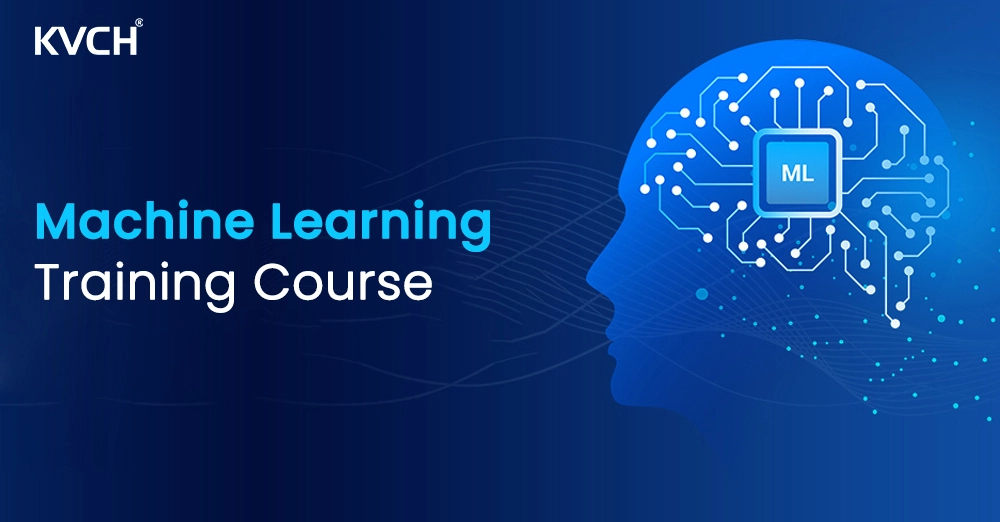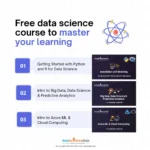Hey there! Ever felt like the world of Artificial Intelligence and Machine Learning was a secret club you weren’t invited to? That’s exactly how I felt not too long ago. Every time I heard terms like "neural networks" or "predictive modeling," my eyes would glaze over. I knew these things were shaping our world, from the movie recommendations I got to the spam filters in my inbox, but I couldn’t wrap my head around how they worked.
Then came my "aha!" moment. I was scrolling through an article about how data could actually predict future trends, and something clicked. I didn’t just want to consume this technology; I wanted to understand it, maybe even build something with it. That’s when I decided: it was time to finally dive into a Machine Learning Course.
Hunting for the Right Guide: What I Looked for in a Machine Learning Course
Deciding to learn was one thing, but finding the right place to learn was another. The internet is flooded with options, and honestly, some of them looked terrifyingly advanced. I wasn’t a coding wizard, and my math skills were, shall we say, a bit rusty.
Here’s what I really wanted from a Machine Learning Course:
- Beginner-Friendly: This was non-negotiable. I needed something that started from square one, assuming I knew next to nothing about Python or complex algorithms.
- Practical & Hands-On: I’m a learn-by-doing kind of person. Lectures are great, but I wanted projects, exercises, and real-world problems to solve.
- Clear Explanations: No jargon-filled academic papers, please! I wanted someone to explain tricky concepts in plain English, with relatable examples.
- Supportive Community: I knew I’d hit roadblocks, so having a place to ask questions and get help was important.
- A Good Pacing: I have a full-time job, so I needed a course that allowed me to learn at my own speed, without feeling rushed or left behind.
After a fair bit of searching, reading reviews, and even trying out a few free intro modules, I settled on a course that seemed to tick all the boxes. It promised to take me from zero to understanding the core of Machine Learning for beginners. I took a deep breath, hit ‘enroll,’ and my journey began.
Stepping into the Unknown: My First Weeks with the Course
The first few weeks were a mix of excitement and mild panic. We started with a quick refresher (or introduction, in my case!) to Python. It wasn’t just about syntax; it was about getting comfortable with data structures like lists and dictionaries, which are crucial when you’re dealing with vast amounts of information. I remember feeling a genuine sense of accomplishment the first time I successfully wrote a small script to read a CSV file. "I’m actually doing it!" I thought.
Then came the magic of data. We learned about collecting it, cleaning it (which, let me tell you, is a bigger job than you might think!), and preparing it for our models. This involved handling missing values, dealing with different data types, and even some basic visualization to understand what our data was telling us. It was like putting together pieces of a puzzle, trying to see the bigger picture before we even thought about "teaching" a computer.
Soon enough, we built our very first simple Machine Learning model: a linear regression. Sounds fancy, right? But the instructor broke it down so simply. It was about finding a line that best fits a set of data points to predict a continuous value, like predicting house prices based on their size. Seeing my little program actually make a prediction, even a simple one, was genuinely thrilling. It was proof that I could, in fact, make a computer "learn."
Demystifying the "Brains" of AI: Core Concepts I Gained Confidence In
As the course progressed, we moved into more complex and fascinating areas. The instructors were brilliant at explaining these concepts not just theoretically, but with practical examples that made them stick.
Supervised Learning: Learning from Examples
This was a big one. Think of it like teaching a child. You show them many examples of cats and dogs, telling them "this is a cat," "this is a dog." Eventually, they learn to identify new cats and dogs on their own.
- Classification: We built models that could put things into categories. My favorite project here was building a simple spam detector. Give it an email, and it tells you if it’s spam or not. It felt like I was building a tiny assistant!
- Regression: We went deeper into predicting numbers. Predicting anything from stock prices (a tough one!) to how many items a store might sell next week. This is where understanding trends in data really shines.
Unsupervised Learning: Finding Hidden Patterns
This type of learning is like giving the computer a bunch of pictures and asking it to group similar ones together, without telling it what to look for.
- Clustering: We used this to find natural groupings in data. Imagine having a list of your customers and wanting to see if there are different "types" of customers who buy similar things. This is super useful for marketing! It felt like discovering hidden secrets within the data.
The Toolkit: Algorithms and Libraries
The course introduced me to some powerful tools that made all of this possible. Scikit-learn became my new best friend. It’s a Python library that has ready-to-use versions of many common Machine Learning algorithms. Instead of building everything from scratch, I learned how to import these tools, feed them my prepared data, and get results. It felt like having a superpower! We also got a gentle introduction to the idea of neural networks and deep learning, which felt like looking through a window into an even more advanced world – something exciting to explore next.
The Rollercoaster of Learning: Challenges and Triumphs
Let’s be real, it wasn’t all smooth sailing. There were days I stared at my code, completely stumped by an error message. Debugging became a familiar (and sometimes frustrating) dance. I remember one particularly stubborn bug that took me hours to fix – but the feeling of finally getting it right? Pure elation! It taught me patience and problem-solving skills I didn’t know I had.
Understanding how to evaluate my models was another hurdle. It’s not enough to just build a model; you need to know if it’s actually good at its job. We learned about metrics like accuracy, precision, and recall. At first, they sounded like abstract math terms, but with practical examples, I began to see why each one was important for different types of problems. For instance, in a medical diagnosis model, you’d want to be very careful about missing a disease (false negatives), even if it means sometimes incorrectly flagging a healthy person (false positive).
The biggest triumph was the feeling of seeing my code, which started as just lines of text, actually do something intelligent. It was like bringing a tiny brain to life, teaching it to learn from data.
Beyond the Classroom: Real-World Applications and My New Perspective
Finishing the course wasn’t the end; it was just the beginning. I started noticing Machine Learning everywhere. Those "customers also bought" recommendations? ML. The way my phone recognizes faces? ML. The systems that help doctors diagnose diseases? You guessed it, ML.
I even started working on my own small projects. I tried to predict which type of flower a picture showed, or guess what the weather would be like based on past data. These might sound simple, but they solidified my understanding and boosted my confidence.
My perspective on technology completely shifted. I no longer see AI as some mysterious, untouchable force. I see it as a powerful set of tools, built by people, that can help us solve complex problems and make better decisions. And the best part? I now feel like I have the foundational knowledge to be part of building those tools.
Who Should Consider a Machine Learning Course Like This?
If any part of my story resonates with you, then a Machine Learning Course might be exactly what you need.
- Are you curious about how "smart" technology works? This is your entry point.
- Do you work with data and want to get more insights from it? ML can help you uncover hidden patterns.
- Are you looking to expand your technical skills and boost your career prospects? Machine Learning engineers and data scientists are in high demand.
- Are you a beginner with limited coding experience but a strong desire to learn? Many courses are designed specifically for you.
Don’t let the complex terms scare you away. The right Machine Learning Course will break everything down into manageable, understandable pieces, just like mine did for me.
Ready to Build the Future (or Just Understand It Better)? My Final Thoughts.
Taking that leap into a Machine Learning Course was one of the best decisions I’ve made for my personal and professional growth. It wasn’t just about learning to code or understand algorithms; it was about changing my mindset, embracing problem-solving, and realizing that complex fields are accessible if you find the right guide.
If you’ve been on the fence, wondering if you’re "smart enough" or "techy enough," let me tell you: you absolutely are. All you need is curiosity and a willingness to learn. Find a course that speaks to you, one that offers clear explanations and hands-on practice, and just start. You might just surprise yourself with what you can build and understand. The future is exciting, and learning Machine Learning is a fantastic way to be a part of it.



